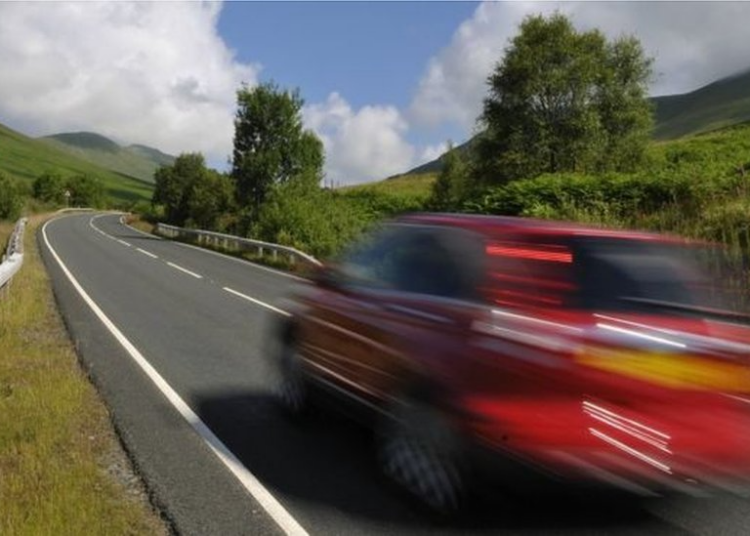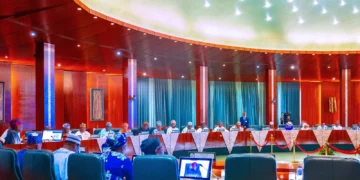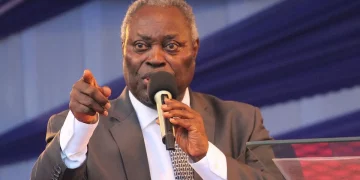Why do people speed? What is the thrill of going fast? Faster than the regulated speed? Is it the feeling of invincibility or overconfidence? Is it that of a deviant or lawbreaker? Is it a show-off? Is this thrill common with younger drivers or common to all categories of road users? Why do we feel so thrilled by excessive speed when the Federal Road Safety Corps says it is risky to speed?
For many road users, speed represents class, status, power, freedom, and a thrilling escape from the norm of daily life. It represents arrogance, show-off, and above all, like I said earlier, invincibility. Invincibility, here stems from the delusion of the marketing gimmicks behind the car brand or its model as fast and ‘indestructible’.
In our clime, it could stem from the belief in what we call odeshi (an Igbo word that loosely translates to ‘it does not leak’, popularly used as being bulletproof, or immune to harm or untouchable. For Christian faithful, it could refer to the belief that the blood of Jesus, which we plead in the face of danger, protects and preserves. My Muslim brothers and sisters believe the Almighty Allah will protect them. The Corps captured this explicitly in what it termed, ’RAIDS’’ (Road accident immunity delusion syndrome) which I treated some months ago
So, where does the thrilling speed feeling come from? I hear that a combination of psychological and physiological responses is responsible. They include adrenaline release, a sense of freedom and power, and the perceived challenge or ego of controlling a fast-moving machine in defiance of any authority, maybe, including death itself.
Speed we know thrills, but it’s a killer. Excessive speed kills more. If you disagree, please read through the several annual submissions of the World Health Organisation and the World Bank and revert. I am talking about the annual World Report on Road Traffic Injury Prevention jointly issued by the WHO and the World Bank. It highlights the global concern that road traffic crashes are impairing global public health and growth. The report contends that road traffic injury is unnecessary and avoidable.
What the report implies is that all crashes that killed people were avoidable. In all these and other crashes that have killed one or more people, excessive speed, defined as speeding above the approved or posted speed limit on a particular road, can be fingered as the reason.
Inappropriate speed, on the other hand, is where the driver drives within the speed limit, but not for the conditions of the road. Before I continue, please allow me to bring you up to speed with specific details of the report, which captures all the risks of driving behaviours, with excessive speed topping the list. I need to dwell more on this so you can appreciate the enormity of excessive speeding.
What I have chosen to do is to run the report verbatim so you will fully appreciate the work jointly done by WHO and the World Bank. The report notes that an increase in average speed, which is my focus, is directly related both to the likelihood of a crash occurring and to the severity of the consequences of the crash. For example, every 1percent increase in mean speed, it notes, produces a 4percent increase in the fatal crash risk and a 3percent increase in the serious crash risk.
It further states that the death risk for pedestrians hit by a car front rises rapidly, 4.5 times from 50 km/h to 65 km/h. In car-to-car side impacts, the fatality risk for car occupants is 85percent at 65 km/h. The next should be of utmost interest to my friends whose pastime is to drive under the influence as well as speeding at the same time.
If you fit into this category of speed freaks, please be reminded of the provisions of the National Road Traffic Regulations, 2012, which specify the speed limits on various roads as well as speed limits of various categories of vehicles. For reminders, the Regulations provide that the maximum speed in Nigeria is 100km/h. The same Regulations stipulate that 100km/h is the maximum speed for cars on the express, while the limit for taxis and buses is 90km/h. The speed limit for articulated vehicles is 60km/h.
The same Regulations provide for the appropriate speed limit for built-up areas, which is my focus and also the focus of the Global Road Safety Week. It provides a maximum speed limit of 50km/h for cars, taxis, and buses as well, tankers and trailers are to do 45km/h while towing, and tow vehicles are 45km/h while towing and 50km/h when not towing. While the provisions explicitly spell out these rules, there are concerns that compliance is a challenge while these signs, according to some observers, are rarely seen on some of our roads.
Meanwhile, the United Kingdom has lately become my reference point whenever I am talking about the United Nations call for speed reduction in cities and built-up areas. Already, there are significant signs that this novelty in safety management will have a positive impact on road traffic crash reduction as well as fatalities and injuries.
From the United Kingdom, new data reveal that there has been a significant reduction in the total number of collisions since the implementation of 20km/h. limits on key roads in London since its introduction in March 2022, on all roads in central London, which I expect should have improved by now.
A breakdown of the impact of this reduction in speed reveals that the number of collisions has reduced by 25percent (from 406 to 304) while collisions resulting in death or serious injury have reduced by 25percent from 94 to 71.
A further breakdown of the data shows that collisions involving vulnerable road users are down by 36percent from 453 to 290. The same is the case with collisions involving people walking by 63percent from 124 to 46. This finding reveals the huge impact lowering speed has had in London and can have on our climate should we demonstrate the will to immediately implement.
This research underlines once again the importance of reducing vehicle speed to a maximum of 20mph in built-up areas. This is because injuries are reduced and more people can feel safe to walk and cycle. Our current road safety strategy, which seeks a zero goal vision, should therefore focus on changing our structure through lowering speed, identified as a killer, which is also crucial in saving lives, but also promoting and encouraging motorists to travel in active and sustainable ways, not just in cities and built-up areas, but also on residential roads. I pray that the States give the Corps Marshal and his team the needed support in driving this United Nations novelty.





